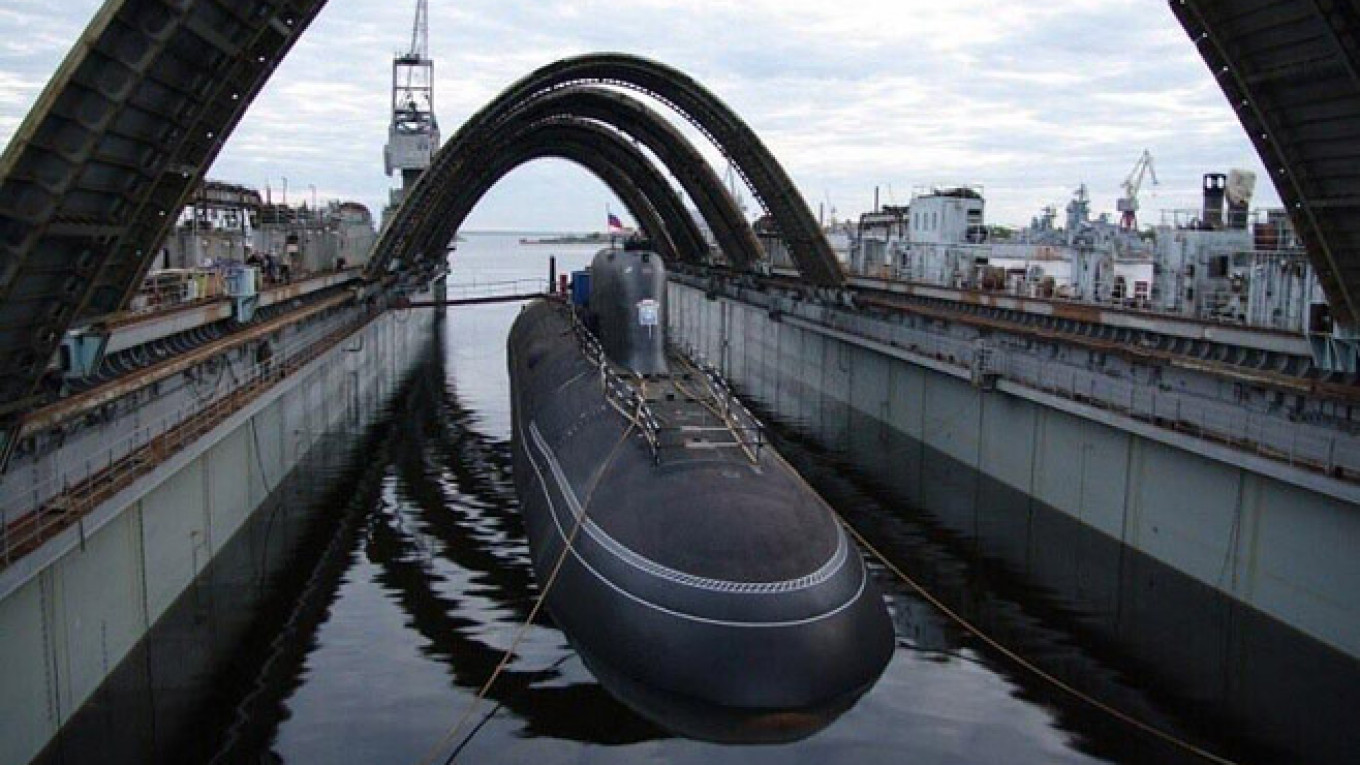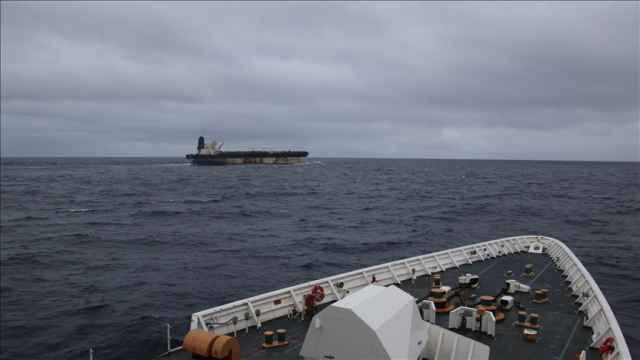Russia's newest nuclear powered attack submarine joined the Northern Fleet on Tuesday, signaling an important milestone in the ongoing modernization of Russia's deteriorating Soviet-era fleet.
After the white and blue cross of the Russian Navy's flag was raised over the submarine's bow at a dockside ceremony celebrating the ship's induction into the fleet, Admiral Viktor Chirkov, the head of the Navy, praised the new vessel for its novel characteristics, such as the ability to launch cruise missiles vertically, its improved stealth capabilities, and its advanced command and control systems, ITAR-Tass reported Tuesday.
Bearing the name of the city in which the submarine — the first of Russia's new-generation Yasen-class boats — was constructed, the Severodvinsk is the lead boat of its class. With three additional vessels slated to follow her, the Yasen-type submarines will phase out the older Soviet-era Akula and Alfa-class attack submarines.
Attack submarines have historically played the role of "hunter-killer" in the great game of undersea cat-and-mouse that the U.S. and Russia have engaged in since the dawn of the Cold War. In this role, one of their main functions is to shadow the other side's larger nuclear submarines — the so-called "boomers" that lurk silently in the ocean depths, waiting to launch a flurry of nuclear missiles at their enemy's homeland — and, if necessary, sink the missile carriers with impunity.
The Yasen submarines are one facet of Russia's two-pronged submarine modernization drive begun under President Vladimir Putin. Russia also has been developing a new class of boomer, known as the Borei-class, which will phase out the behemoth, 175-meter Typhoon class missile boats — the largest submarines ever built.
Two Borei-class submarines have already been completed and put to sea, and another two are being built. Russia's defense establishment hopes that together, the Yasen and Borei-class submarines will revive the Russian Navy as a player on the high seas, after it lost much of its naval might to neglect and decay during the turbulent 1990s.
But even in withered form, the remnants of the old Soviet Navy could never be written off — In Summer 2012, a Russian Akula-class submarine was able to infiltrate the Gulf of Mexico and patrol restricted U.S. waters for over a month without being detected by the U.S. Navy.
See also:
Russia and NATO Flex Muscles at Parallel Baltic War Games
Contact the author at [email protected]
A Message from The Moscow Times:
Dear readers,
We are facing unprecedented challenges. Russia's Prosecutor General's Office has designated The Moscow Times as an "undesirable" organization, criminalizing our work and putting our staff at risk of prosecution. This follows our earlier unjust labeling as a "foreign agent."
These actions are direct attempts to silence independent journalism in Russia. The authorities claim our work "discredits the decisions of the Russian leadership." We see things differently: we strive to provide accurate, unbiased reporting on Russia.
We, the journalists of The Moscow Times, refuse to be silenced. But to continue our work, we need your help.
Your support, no matter how small, makes a world of difference. If you can, please support us monthly starting from just $2. It's quick to set up, and every contribution makes a significant impact.
By supporting The Moscow Times, you're defending open, independent journalism in the face of repression. Thank you for standing with us.
Remind me later.






